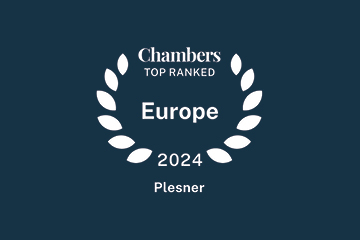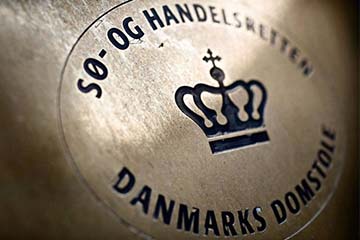New judgment on the use of applied art for marketing purposes
18 December 2018
On 18 December 2018, the Danish Supreme Court delivered a judgment of general public importance on the use of applied art in marketing material and on packaging.
The issue of the case was whether Coop infringed Kasper Heie Würtz's rights to a ceramic tableware set and breached the Danish Marketing Practices Act by using, without Kasper Heie Würtz's consent, the tableware in question in several advertising leaflets and on Coop's food packaging showing Coop's products, for example potato chips, fish and beans, being served on the tableware.
The Supreme Court found that Kasper Heie Würtz's tableware is protected by copyright as applied art. Accordingly, Kasper Heie Würtz has an exclusive right to control the tableware by reproducing it and by making it available to the public in the form of photographs and copies.
The Supreme Court further found that Coop had not proved the existence of a legally binding custom in the advertising business and the food retail business to the effect that applied art protected by copyright can be used in the manner in question without the creator's consent, as long as the object is not well-known or serves as a distinctive feature but is merely used for practical purposes as a natural part of the setting.
However, the Supreme Court found that the use of applied art protected by copyright - even in a commercial, marketing context - might be of such minor importance that the use is deemed not to constitute copyright infringement. But according to the Supreme Court, such an exception not laid down in the Copyright Act is to be interpreted restrictively and must not affect the normal exploitation of the work in a detrimental manner, and must not prejudice the interests of the creator unreasonably.
On that background, the Supreme Court found that the majority of the relevant pictures of the tableware in Coop's advertising leaflets and on Coop's food packaging could not be deemed to be of such minor importance in the relevant context that Coop's use of the tableware was exempt from the scope of the copyright protection. In that connection the Supreme Court attached importance to whether the reproduction of the tableware was distinctive and whether the tableware must be deemed to constitute an essential element in the reproductions.
In the Supreme Court's opinion, Coop's extensive use of Kasper Heie Würtz's tableware had also created a risk of the brand being diluted, and consequently Coop had also acted contrary to good marketing practices.
Furthermore, Coop was ordered to pay DKK 200,000 to Kasper Heie Würtz as reasonable compensation for the infringements.
The judgment may have considerable practical importance, as it has so far been common practice in eg the advertising business to use applied art protected by copyright in the manner described without obtaining the consent of or paying the creator, as long as the object is not well-known or serves as a distinctive feature but is merely used for a practical purpose as a natural part of the setting.
The Supreme Court's judgement includes the relevant photos from the advertising leaflets and of the food packaging; both the photos that constituted infringement of Kasper Heie Würtz's rights, and those that did not (see pages 27-32). The judgment may therefore serve as a guide in future when deciding whether the nature of any use of applied art protected by copyright in connection with a business' marketing or on its packaging is such that it is of minor importance in the relevant context.
However, it will always depend on a specific assessment whether the use is of minor importance or not, and it may be difficult to assess whether or not an object is protected by copyright as applied art as well.
If you wish to use objects that may be copyright protected as applied art in marketing material for your business, you will therefore have to proceed with caution and always consider obtaining the creator's prior consent for the sake of good order.
Read the Danish Supreme Court's judgment (in Danish)
The Supreme Court found that Kasper Heie Würtz's tableware is protected by copyright as applied art. Accordingly, Kasper Heie Würtz has an exclusive right to control the tableware by reproducing it and by making it available to the public in the form of photographs and copies.
The Supreme Court further found that Coop had not proved the existence of a legally binding custom in the advertising business and the food retail business to the effect that applied art protected by copyright can be used in the manner in question without the creator's consent, as long as the object is not well-known or serves as a distinctive feature but is merely used for practical purposes as a natural part of the setting.
However, the Supreme Court found that the use of applied art protected by copyright - even in a commercial, marketing context - might be of such minor importance that the use is deemed not to constitute copyright infringement. But according to the Supreme Court, such an exception not laid down in the Copyright Act is to be interpreted restrictively and must not affect the normal exploitation of the work in a detrimental manner, and must not prejudice the interests of the creator unreasonably.
On that background, the Supreme Court found that the majority of the relevant pictures of the tableware in Coop's advertising leaflets and on Coop's food packaging could not be deemed to be of such minor importance in the relevant context that Coop's use of the tableware was exempt from the scope of the copyright protection. In that connection the Supreme Court attached importance to whether the reproduction of the tableware was distinctive and whether the tableware must be deemed to constitute an essential element in the reproductions.
In the Supreme Court's opinion, Coop's extensive use of Kasper Heie Würtz's tableware had also created a risk of the brand being diluted, and consequently Coop had also acted contrary to good marketing practices.
Furthermore, Coop was ordered to pay DKK 200,000 to Kasper Heie Würtz as reasonable compensation for the infringements.
The significance of the judgment
The judgment establishes that if a business wishes to use applied art protected by copyright in connection with its marketing activities or on its packaging in a manner that is not of minor importance in the relevant context, such business is to obtain the creator's prior consent.The judgment may have considerable practical importance, as it has so far been common practice in eg the advertising business to use applied art protected by copyright in the manner described without obtaining the consent of or paying the creator, as long as the object is not well-known or serves as a distinctive feature but is merely used for a practical purpose as a natural part of the setting.
The Supreme Court's judgement includes the relevant photos from the advertising leaflets and of the food packaging; both the photos that constituted infringement of Kasper Heie Würtz's rights, and those that did not (see pages 27-32). The judgment may therefore serve as a guide in future when deciding whether the nature of any use of applied art protected by copyright in connection with a business' marketing or on its packaging is such that it is of minor importance in the relevant context.
However, it will always depend on a specific assessment whether the use is of minor importance or not, and it may be difficult to assess whether or not an object is protected by copyright as applied art as well.
If you wish to use objects that may be copyright protected as applied art in marketing material for your business, you will therefore have to proceed with caution and always consider obtaining the creator's prior consent for the sake of good order.
Read the Danish Supreme Court's judgment (in Danish)












